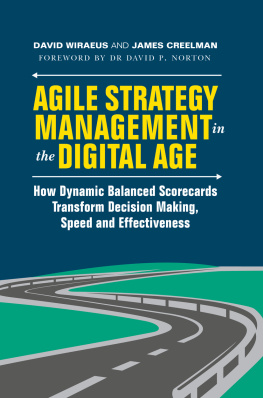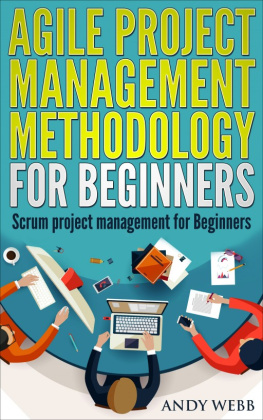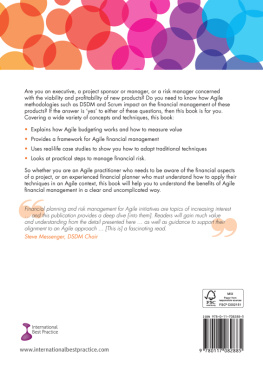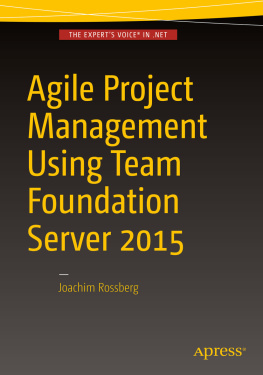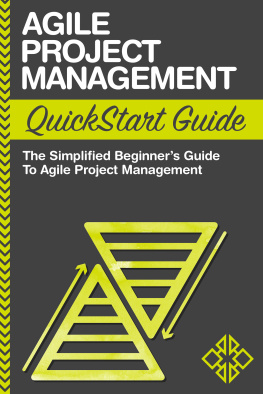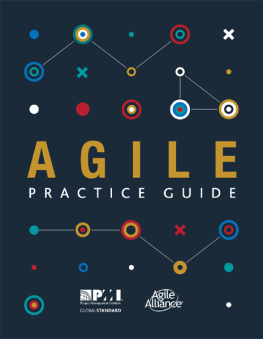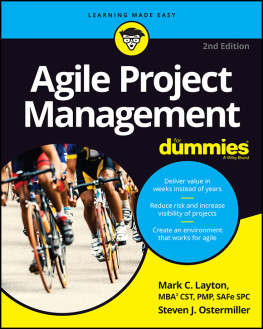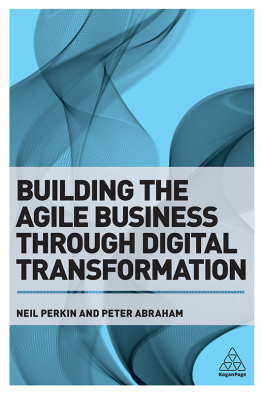David Wiraeus - Agile Strategy Management in the Digital Age
Here you can read online David Wiraeus - Agile Strategy Management in the Digital Age full text of the book (entire story) in english for free. Download pdf and epub, get meaning, cover and reviews about this ebook. publisher: Springer International Publishing, genre: Business. Description of the work, (preface) as well as reviews are available. Best literature library LitArk.com created for fans of good reading and offers a wide selection of genres:
Romance novel
Science fiction
Adventure
Detective
Science
History
Home and family
Prose
Art
Politics
Computer
Non-fiction
Religion
Business
Children
Humor
Choose a favorite category and find really read worthwhile books. Enjoy immersion in the world of imagination, feel the emotions of the characters or learn something new for yourself, make an fascinating discovery.
- Book:Agile Strategy Management in the Digital Age
- Author:
- Publisher:Springer International Publishing
- Genre:
- Rating:5 / 5
- Favourites:Add to favourites
- Your mark:
- 100
- 1
- 2
- 3
- 4
- 5
Agile Strategy Management in the Digital Age: summary, description and annotation
We offer to read an annotation, description, summary or preface (depends on what the author of the book "Agile Strategy Management in the Digital Age" wrote himself). If you haven't found the necessary information about the book — write in the comments, we will try to find it.
Agile Strategy Management in the Digital Age — read online for free the complete book (whole text) full work
Below is the text of the book, divided by pages. System saving the place of the last page read, allows you to conveniently read the book "Agile Strategy Management in the Digital Age" online for free, without having to search again every time where you left off. Put a bookmark, and you can go to the page where you finished reading at any time.
Font size:
Interval:
Bookmark:
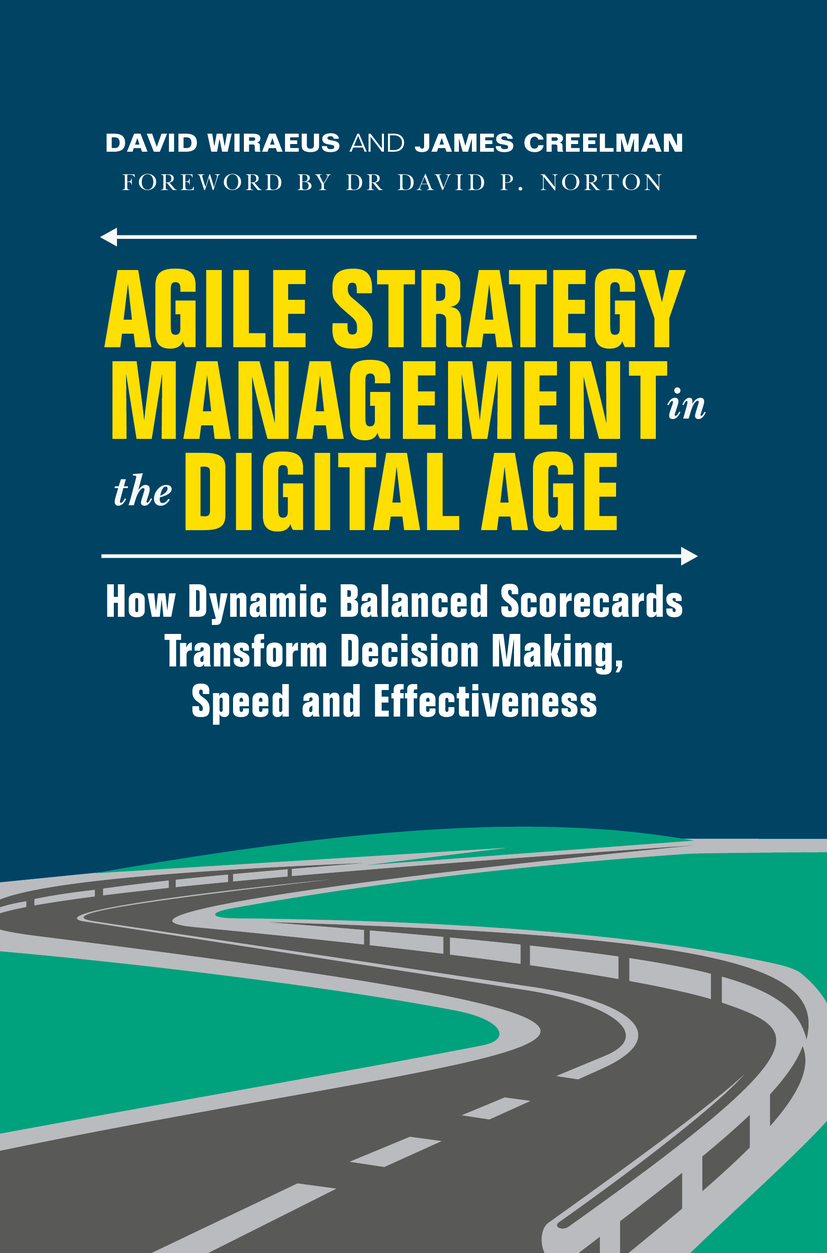

This Palgrave Macmillan imprint is published by the registered company Springer Nature Switzerland AG
The registered company address is: Gewerbestrasse 11, 6330 Cham, Switzerland
I dedicate this book to my wife Vanja and our child Ella, as well as my sister Frida and parents Ulla and Anders, with all my love.
David Wiraeus
For my great nephews Kian Creelman and Ezra French and my great niece Arrabella French. Enjoy the long journey ahead.
James Creelman
More than 25 years have passed since Bob Kaplan and I introduced the concept of the Balanced Scorecard through a Harvard Business Review article. This relayed the findings from a research project we led in 1990 with 12 large companies to find better ways to measure performance, rather than relying solely on financial measures. At that time, we were transitioning into the knowledge age, in which intangible assets were becoming more valuable than tangible ones, and where the increasing speed of change in markets meant that financial measures were no longer reliable predictors of future performance.
Financial results would remain, and continue to be, important, at least for commercial entities, but what were the non-financial drivers of those outcomes? This was the question we grappled with.
The answer proved simple and logical. Customers delivered financial results; the organization had to ensure its internal processes delivered value to the customer and that they possessed the required skills and capabilities to deliver those processes effectively and efficiently.
These observations were translated into the Balanced Scorecard framework, which comprised Financial , Customer , Internal Process , and Learning and Growth perspectives, each of which contained objectives (what we want to achieve), measures and targets (how we will monitor progress), and initiatives (how we will deliver to those targets).
A further question we wrestled with was why 90% of organizations failed to deliver to their strategy, even when it was well thought-out and logical. We found that the Balanced Scorecard could describe and operationalize strategies that previously were generally restricted to a very detailed strategic plan, which rarely left the boardroom shelf. Bob and I chronicled the successes of the original tranche of scorecard users in our first book, The Balanced Scorecard: Translating Strategy into Action .
In our continued research, we found that some of the early Balanced Scorecard users, such as Mobil Oils North American Division, gained additional value when the strategic objectives were laid out separately to show the causal effect from the learning and growth perspective, through internal processes to customer and financial. Furthermore, although originally launched to overcome strategic performance management and measurement challenges in commercial organizations, government and not-for-profit entities, such as the City of Charlotte, North Carolina, soon adopted the framework. However, to meet their needs, such organizations reordered the perspectives, with stakeholder at the top (typically replacing the term customer) and financial lower down the Strategy Map.
These first Strategy Maps proved as valuable to users as the original Balanced Scorecard itself, as we explained in our second book, The Strategy-Focused Organization: How Balanced Scorecard Companies Thrive in the New Business Environment and described fully in our third book, Strategy Maps: Converting Intangible Assets into Tangible Outcomes.
The story did not end there. We continued to learn from the experiences of an ever-growing number of users. Our fourth book, Alignment: Using the Balanced Scorecard to Create Corporate Synergies, documented the value organizations gained from cascading the Balanced Scorecard from the corporate level to business units and then to operating departments and support functions, as well as being the basis for strategically aligning external stakeholders.
Our final book. The Execution Premium: Linking Strategy to Operations for Competitive Advantage, set out to offer a complete strategy management system through a six-stage model: defining the strategy, translating the strategy, aligning the organization, aligning operations, monitoring and learning, and testing and adapting.
However, even completing the fifth and final book does not mean the end of the story. On introducing the Balanced Scorecard framework and methodology, Bob Kaplan and I realized we were launching a revolution, not a static system. We knew it would continue to evolve to meet the strategic requirements of organizations in ever-changing and fast-moving markets.
Our work, and most notably the final book, serves as the inspiration for this book, Agile Strategy Management in the Digital AgeHow Dynamic Balanced Scorecards Transform Decision Making, Speed, and Effectiveness.
Just as Bob and I grappled with the challenges of transitioning from the industrial age to the knowledge age, Wiraeus and Creelman turn their attention to the challenges of moving into the digital age.
Changing roles from Balanced Scorecard historian to Balanced Scorecard futurist, the authors inventory the issues that must be integrated into the management systems of the future They are to be commended for the audacity of their undertaking and for the reach of their results.
The revolution continues.
Font size:
Interval:
Bookmark:
Similar books «Agile Strategy Management in the Digital Age»
Look at similar books to Agile Strategy Management in the Digital Age. We have selected literature similar in name and meaning in the hope of providing readers with more options to find new, interesting, not yet read works.
Discussion, reviews of the book Agile Strategy Management in the Digital Age and just readers' own opinions. Leave your comments, write what you think about the work, its meaning or the main characters. Specify what exactly you liked and what you didn't like, and why you think so.

